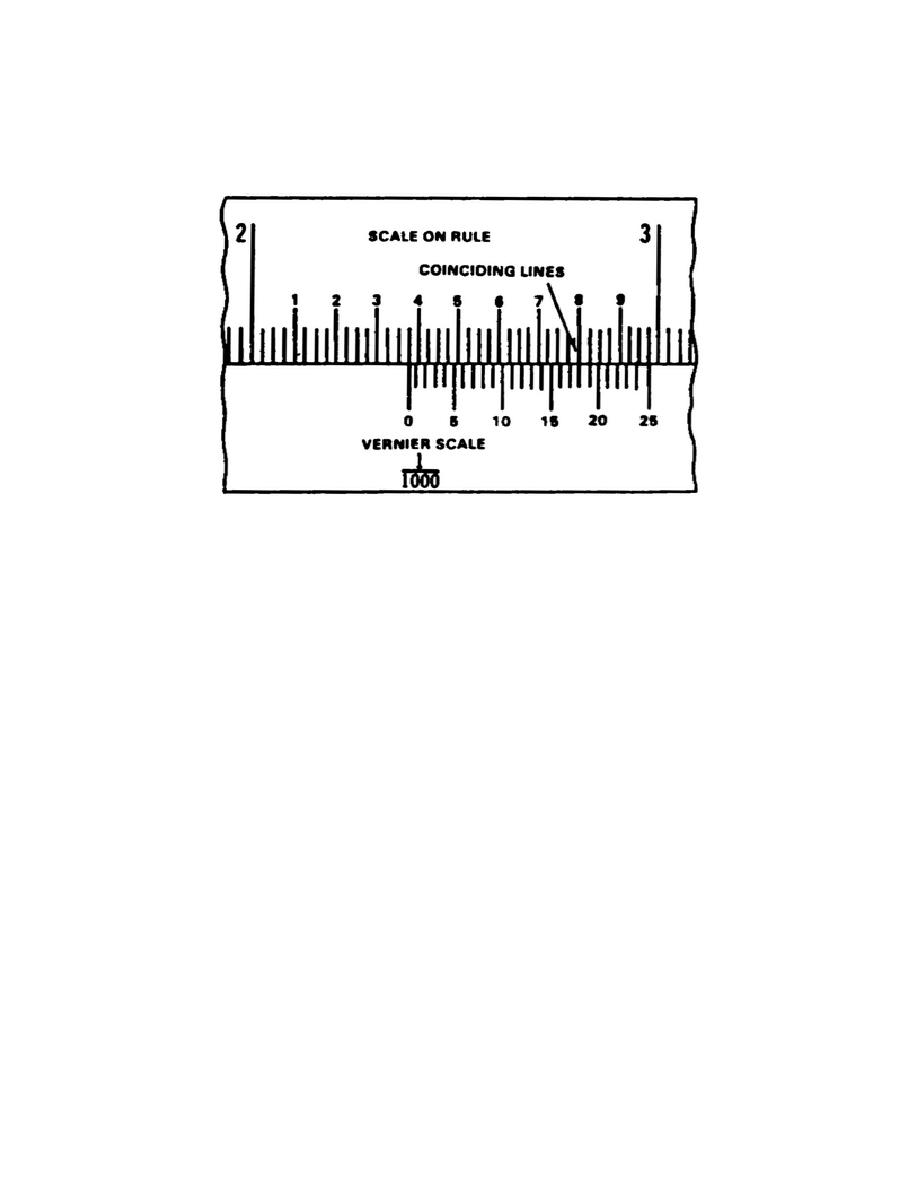
Lesson 2/Learning Event 2
The 0 mark on the vernier scale, Figure 33, coincides with a fractional part
of a space on the rule. The reading is 2.35 plus a fraction of the space on
the rule.
FIGURE 33.
READING THE VERNIER SCALE
To determine what fractional part of a whole rule division, or how many
thousandths are to be added to the 2.35 reading, it is necessary to find the
line on the vernier scale that exactly coincides with the line on the rule.
In this case the line coincides at the eighteenth mark.
This indicates
18/25 of a whole space.
Since each space on the rule equals 0.025 inch,
this part of a space is equal to 0.018 inch, and the total reading is 2.35
plus 0.018, or 2.368 inches.
NOTE. Vernier scales are not necessarily 25 divisions long; they may have
any number of units.
For example, the ten thousandths micrometer has a
scale of only ten divisions.
The vernier caliper has a wide range of measurement applications. The shape
of the measuring jaws and their position with respect to the scale makes
this tool more adaptable than a micrometer. The vernier caliper, however,
does not have the accuracy of a micrometer. In any 1 inch of its length a
vernier caliper should be accurate within 0.001 inch. In any 12 inches, it
should be accurate within 0.002 inch and increase about 0.001 for every
additional 12 inches.
The accuracy of measurements made with a vernier
caliper is dependent on the user's ability to feel the measurement.
Because the jaws are long and may have some play in them (especially if an
excessive measuring pressure is used), it is necessary to develop the
ability to handle the vernier caliper. This ability (feel) may be acquired
by measuring such known standards as gage blocks and plug gages.
42



 Previous Page
Previous Page
